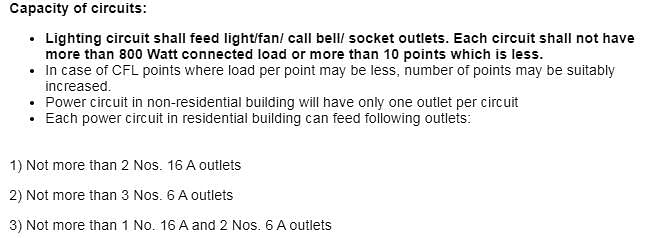Test: Estimation & Costing - Electrical Engineering (EE) MCQ
20 Questions MCQ Test - Test: Estimation & Costing
For domestic wiring, the most extensively used material is
| 1 Crore+ students have signed up on EduRev. Have you? Download the App |
______ should be provided as the working space around the main switchboard according to IE rule 51.
The Main factor to be considered while preparing a detailed estimate
Which of the following statements is not true with regard to the cleat wiring systems?
What is the factor of safety used for current ratings in a power installation?
The cross-sectional area of conductor for house wiring is usually expressed as:
What is the maximum distance between the two successive cleats?
Which type of conduit pipe is used in industrial wiring?
Mixture preferred for filling around the earth electrode for effective earthing is:
What is the maximum distance between the two successive cleats?
As per recommendation of ISI the maximum number of points of lights, fans, and socket that can be connected in one sub-circuit is
Which among these is a type of internal (domestic) wiring?
One among the following is the top most conductors in high voltage transmission lines, identify it.
What are the minimum cross sections of conductors that are used for power wiring?
The type of wiring that is highly suitable for a temporary shed is
Which type of lamp holder from the following is fitted directly on the wooden board?


















